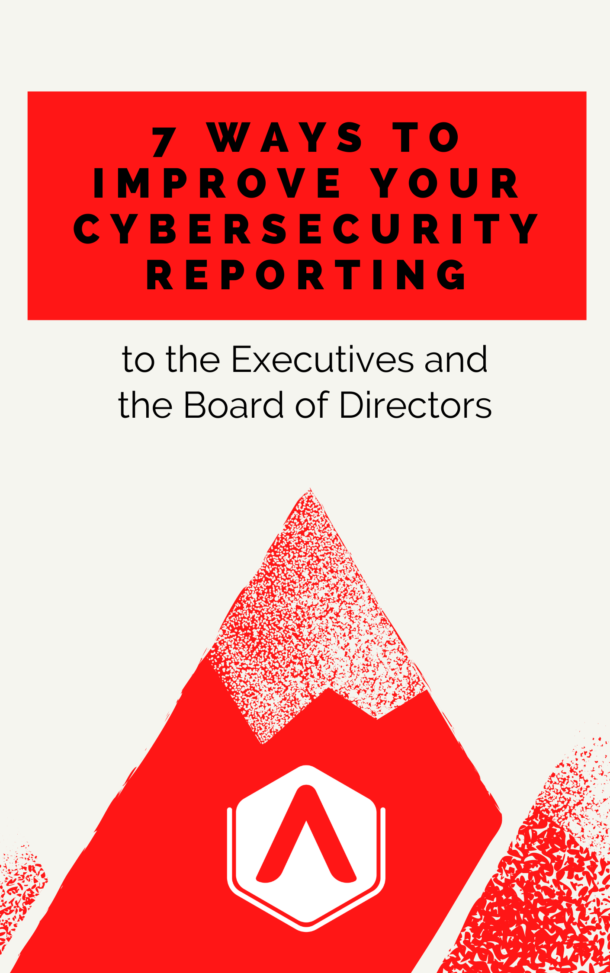Artificial intelligence (AI) is becoming a powerful ally in bolstering many companies’ cybersecurity defenses.
From detecting and responding to sophisticated malware and hacking attempts to identifying vulnerabilities and anomalies in networks, AI is proving to be a game-changer in cybersecurity.
As AI becomes widely incorporated into this critical domain, organizations need to develop and adopt robust AI policy frameworks. This will help them fully realize the benefits, while also mitigating manifold risks, upholding ethical principles, and maintaining the trust of stakeholders.
But before that…
How Do Companies Use AI?
One of the primary ways companies leverage AI is through automation. AI-powered systems can streamline repetitive and time-consuming tasks, freeing up human resources to focus on more complex and strategic endeavors. For instance, chatbots powered by natural language processing (NLP) can handle customer inquiries and support requests, providing 24/7 assistance and improving customer satisfaction.
AI also plays a crucial role in data analysis and decision-making. By harnessing the power of machine learning algorithms, companies can uncover valuable insights from vast amounts of data, enabling them to make data-driven decisions and optimize their operations. Predictive analytics, powered by AI, allows businesses to forecast future trends, anticipate customer behavior, and make informed strategic decisions.
Marketing and sales are other areas where AI has made significant strides. AI-driven personalization engines can analyze customer data and preferences, enabling companies to deliver highly targeted and personalized experiences. Recommendation systems, powered by AI, can suggest products or services tailored to individual customers, increasing engagement and driving sales.
AI is also transforming industries such as healthcare, finance, and manufacturing. In healthcare, AI-assisted diagnostics can detect patterns and anomalies in medical images, aiding in early disease detection and treatment planning. In finance, AI algorithms can analyze vast amounts of data to identify investment opportunities, detect fraudulent activities, and optimize portfolio management.
However, as companies increasingly rely on AI, it is essential to recognize and mitigate the potential risks associated with its implementation and deployment.
How AI Introduces Risks to a Company
AI poses potential for algorithmic bias. AI models are trained on data, and if that data is biased or incomplete, the resulting algorithms can perpetuate and amplify those biases. This can lead to discriminatory practices and unfair treatment of certain groups, exposing companies to legal risks and damaging their reputation.
Ensuring data privacy and security is crucial in the implementation of AI. AI systems often rely on datasets, including personal information. Inadequate protection measures or security flaws could lead to data breaches, jeopardizing customer privacy and trust potentially resulting in repercussions.
Another concern is the lack of transparency in AI systems using learning models. These opaque algorithms may make decisions without providing explanations or justifications which raises accountability issues and ethical considerations.
AI programs are also at risk of facing assaults, where intentioned individuals try to influence or take advantage of the inputs or outputs of the system. These assaults can jeopardize the trustworthiness and dependability of decisions made by AI, possibly resulting in setbacks or disruptions, in operations.
Furthermore, the deployment of AI systems can have unintended consequences or negative externalities that are difficult to predict or anticipate. For instance, an AI system optimized for efficiency may inadvertently prioritize cost-cutting measures over environmental or social considerations, leading to undesirable outcomes.
To mitigate these risk of Artificial Intelligence, it is crucial for companies to develop and implement comprehensive AI policies that address ethical considerations, governance frameworks, and risk management strategies.
Defining an AI Policy
An AI policy is a comprehensive framework that guides an organization’s approach to the development, deployment, and use of artificial intelligence systems. It serves as a roadmap for ensuring the responsible and ethical implementation, while mitigating potential risk of Artificial Intelligence and upholding societal values.
What an AI policy should address
As businesses increasingly rely on AI for cybersecurity efforts, the need for a robust AI policy becomes paramount. An effective AI policy in the context of cybersecurity should address the following key areas:
- Data Privacy and Security: Guidelines for the collection, storage, processing, and sharing of sensitive data used in AI systems, ensuring compliance with relevant privacy laws and regulations, and implementing robust security measures to protect against data breaches and unauthorized access.
- Algorithmic Fairness and Non-Discrimination: Measures to mitigate algorithmic bias and discrimination, ensuring that AI systems used in cybersecurity do not perpetuate unfair practices or disproportionately impact certain groups or individuals.
- Transparency and Explainability: Requirements for documenting AI models, providing explanations for decisions, and enabling external audits or reviews, ensuring transparency and accountability in AI-powered cybersecurity solutions.
- Human Oversight and Control: Defining the appropriate level of human involvement and control in AI-powered decision-making processes, ensuring that critical cybersecurity decisions are subject to human oversight and review.
- Security and Resilience: Measures for protecting AI systems from adversarial attacks, securing data and infrastructure, and establishing incident response protocols to ensure the security and resilience of AI-powered cybersecurity solutions.
- Responsible AI Development and Deployment: Guidelines for the responsible development and deployment of AI systems in cybersecurity, including requirements for testing, validation, and continuous monitoring.
- Governance and Oversight: Establishing a governance framework for overseeing AI initiatives in cybersecurity, such as creating an AI ethics board, appointing an AI officer, or implementing regular audits and risk assessments.
- Stakeholder Engagement and Education: Strategies for raising awareness, providing training, and soliciting feedback from stakeholders, including cybersecurity professionals, IT teams, and relevant external parties.
- Continuous Improvement and Adaptation: Processes for regularly reviewing and updating the AI policy to reflect emerging best practices, regulatory changes, and evolving cybersecurity threats and landscape.
By incorporating these essential elements into an AI policy, organizations can harness the power of AI for cybersecurity while mitigating risks, upholding ethical principles, and fostering trust among stakeholders.
Crafting an Effective AI Policy for Cybersecurity
Developing an effective AI policy for cybersecurity requires a collaborative effort involving various stakeholders, including cybersecurity professionals, IT teams, legal and compliance experts, and ethical advisors. Here are some key steps to consider:
- Establish an AI Policy Working Group: Assemble a cross-functional team that includes representatives from cybersecurity, IT, legal, ethics, data privacy, and risk management. This group will be responsible for drafting and reviewing the AI policy.
- Define Ethical Principles and Values: Clearly articulate the organization’s ethical principles and values that will guide the development, deployment, and use of AI systems in cybersecurity, such as respect for privacy, fairness, transparency, and accountability.
- Conduct a Risk of AI Assessment: Identify potential risks associated with AI implementation in cybersecurity, such as data privacy concerns, security vulnerabilities, algorithmic bias, and unintended consequences. This assessment will inform the necessary safeguards and risk mitigation strategies outlined in the AI policy.
- Engage Stakeholders and Seek Input: Solicit feedback and input from various stakeholders, including cybersecurity professionals, IT teams, industry experts, and relevant regulatory bodies. This inclusive approach ensures that diverse perspectives and concerns are considered in the policy development process.
- Establish Governance and Oversight Mechanisms: Define the governance framework for overseeing AI development and deployment in cybersecurity, including the roles and responsibilities of an AI ethics board, AI officer, or other oversight bodies.
- Develop Guidelines and Procedures: Create detailed guidelines and procedures for various aspects of the AI lifecycle in cybersecurity, such as data management, algorithm development, testing and validation, deployment, monitoring, and incident response.
- Incorporate Legal and Regulatory Considerations: Ensure that the AI policy complies with relevant laws, regulations, and industry standards related to data privacy, non-discrimination, and cybersecurity best practices.
- Provide Training and Awareness Programs: Develop training and awareness programs to educate cybersecurity professionals, IT teams, and other relevant employees on the AI policy, its principles, and their roles and responsibilities in upholding the policy.
- Implement Continuous Review and Update Processes: Establish processes for regularly reviewing and updating the AI policy to reflect evolving best practices, technological advancements, changing regulatory landscapes, and emerging cybersecurity threats.
- Communicate and Promote the AI Policy: Once finalized, effectively communicate and promote the AI policy internally and externally to foster transparency, build trust, and demonstrate the organization’s commitment to responsible and ethical AI practices in cybersecurity.
By following these steps, organizations can develop a comprehensive and robust AI policy that serves as a guiding framework for the ethical and responsible adoption of AI technologies in cybersecurity, mitigating risks, upholding ethical principles, and fostering trust among stakeholders.
The Risks of Not Having an AI Policy in Cybersecurity
There are a number of potential and pitfall AI risks when an organization fails to implement a comprehensive AI policy. These include:
- Loss of Intellectual Property: When sensitive information in ingested to open source, or open license AI platforms that data can be close to impossible to get back. The data can be queried and used to generate data for others and possibly expose this sensitive data.
- Legal and Regulatory Risks: As governments and regulatory bodies grapple with the implications of AI in cybersecurity, companies without a robust AI policy may find themselves in violation of emerging laws and regulations, resulting in hefty fines, legal battles, and reputational damage.
- Security Vulnerabilities and Data Breaches: AI systems used in cybersecurity can be susceptible to adversarial attacks, data breaches, and other security threats. Without a comprehensive AI policy that outlines security measures and incident response protocols, organizations may be ill-prepared to mitigate these AI risks, potentially leading to significant financial losses and reputational damage.
- Ethical Breaches and Loss of Trust: Without a clear ethical framework in place, businesses risk deploying AI solutions in cybersecurity that perpetuate discriminatory practices, infringe on privacy rights, or compromise human autonomy. This can lead to public outcry, loss of trust, and long-term damage to the company’s reputation.
- Lack of Transparency and Accountability: AI algorithms used in cybersecurity can be opaque and difficult to interpret, leading to concerns about transparency and accountability. Failure to address these issues through an AI policy can undermine trust in the organization’s AI risk initiatives and expose it to scrutiny from stakeholders and regulatory bodies.
- Missed Opportunities for Innovation: A well-crafted AI policy can serve as a catalyst for innovation in cybersecurity by providing a structured approach to identifying and mitigating potential risks and vulnerabilities. Without such a framework, organizations may be hesitant to explore and leverage the full potential of AI technologies in this domain, missing out on opportunities for enhanced security and competitive advantage.
By neglecting to develop and implement a comprehensive AI policy for cybersecurity, organizations expose themselves to legal, ethical, and operational risks that can undermine their security posture, damage their reputation, and hinder their ability to responsibly harness the power of AI in this critical domain.
Conclusion
In the ever-evolving world of cybersecurity, where threats are constantly escalating in sophistication and complexity, AI presents a powerful ally in bolstering defenses and staying ahead of malicious actors. However, the responsible implementation of AI in this critical domain demands a thoughtful and proactive approach.
By embracing a comprehensive and robust AI policy, organizations can navigate the intricate terrain of AI adoption in cybersecurity while mitigating risks, upholding ethical principles, and fostering trust among stakeholders. This policy serves as a beacon, guiding businesses through the complexities of data privacy, algorithmic fairness, transparency, accountability, and responsible AI development and deployment.
Neglecting to implement an AI policy in cybersecurity can expose organizations to legal and regulatory AI risks, security vulnerabilities, ethical breaches, and missed opportunities for innovation. It is imperative that businesses prioritize the development and adherence to a robust AI policy framework, positioning themselves as leaders in the responsible and ethical use of AI technologies in this critical domain.
Ultimately, the journey towards responsible AI implementation in cybersecurity is a shared responsibility, requiring collaboration among businesses, policymakers, cybersecurity professionals, and stakeholders. By prioritizing the development and adherence to a comprehensive AI policy, we can collectively navigate the challenges and harness the transformative power of AI to secure our digital future.


Recent Comments